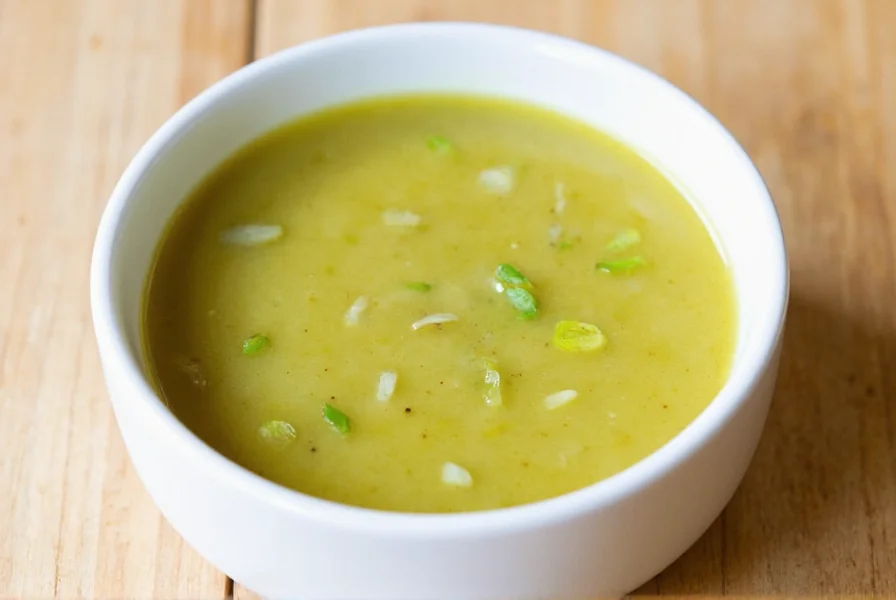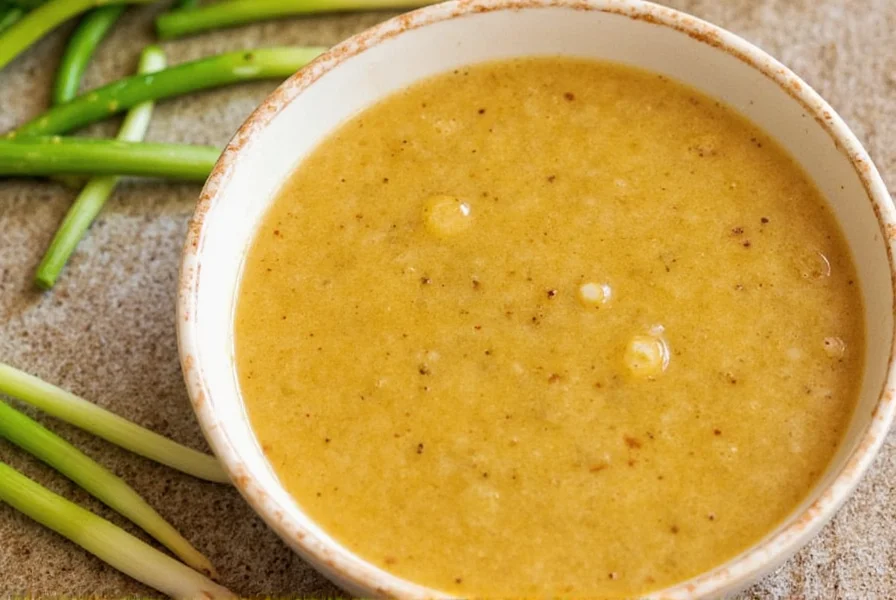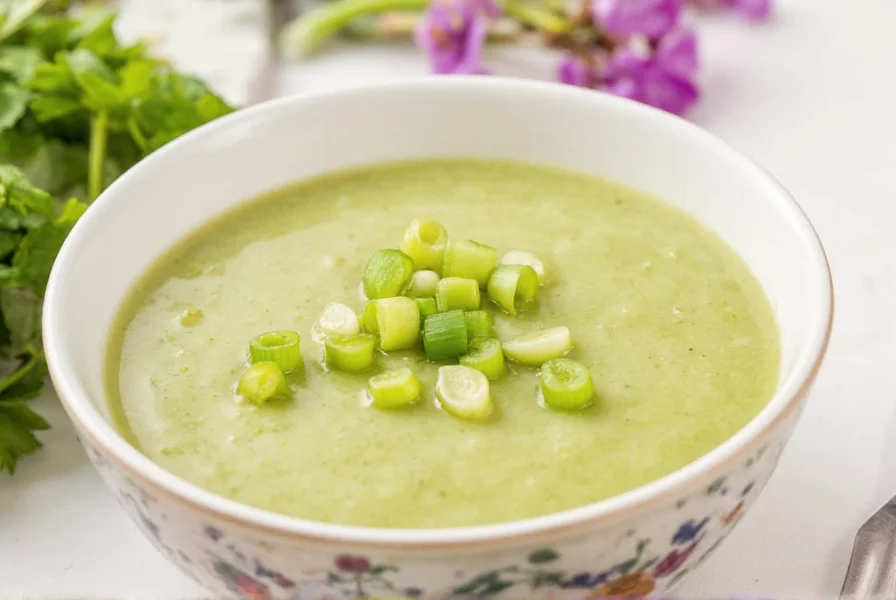Ginger scallion sauce represents one of the most elegant simplicity in Chinese culinary tradition. This fundamental condiment transforms ordinary steamed dishes into extraordinary meals through its perfect balance of fresh aromatics and carefully heated oil. Unlike complex sauces requiring multiple steps, authentic ginger scallion sauce relies on quality ingredients and precise technique rather than complicated processes.
The Cultural Significance of Ginger Scallion Sauce
Originating from Cantonese cuisine, ginger scallion sauce has been a staple in Chinese households for generations. Its prominence in dim sum culture makes it particularly valuable for culinary enthusiasts exploring authentic Chinese cooking techniques. The sauce's popularity extends beyond China, becoming a favorite in Chinese restaurants worldwide for its ability to enhance delicate flavors without overpowering them.
Essential Ingredients and Their Roles
The magic of homemade ginger scallion sauce lies in its minimal ingredient list, where each component plays a critical role. Understanding these elements helps achieve the perfect balance:
| Ingredient | Function | Recommended Quantity |
|---|---|---|
| Fresh ginger | Provides bright, spicy warmth | 3 tablespoons finely minced |
| Scallions (green onions) | Contributes fresh onion flavor | 1 cup thinly sliced |
| Neutral oil | Carries flavors and creates emulsion | 1 cup (vegetable or canola) |
| Salt | Enhances overall flavor profile | 1/2 teaspoon |
| Sesame oil (optional) | Adds nutty depth | 1 teaspoon |

Step-by-Step Preparation Guide
Creating authentic ginger scallion sauce requires attention to temperature and timing. Follow these professional techniques for optimal results:
- Prepare ingredients: Finely mince fresh ginger and slice scallions into thin 1-inch pieces
- Combine ginger and scallions in a heatproof bowl
- Heat neutral oil in a small saucepan to 350°F (175°C) - this precise temperature is crucial
- Slowly pour 1/3 of the hot oil over the aromatics to release essential oils
- Gently stir the mixture, then add remaining oil in two additional increments
- Mix in salt and optional sesame oil
- Let cool to room temperature before use
The key to perfect ginger scallion sauce lies in the oil temperature. Too cool and the aromatics won't properly infuse; too hot and they'll burn, creating bitterness. The ideal result should be fragrant with visible separation between oil and solids, ready to spoon over steamed dishes.
Storage Techniques for Maximum Freshness
Proper storage extends the shelf life of your homemade ginger scallion sauce while maintaining flavor integrity:
- Refrigerate in an airtight container for up to 1 week
- Freeze in ice cube trays for longer storage (up to 3 months)
- Always use clean utensils when handling to prevent contamination
- Store with a thin layer of oil covering the top to prevent oxidation
When properly stored, the sauce maintains its vibrant flavor profile, making it convenient for quick weeknight meals. Many professional chefs prepare larger batches for efficient kitchen workflow.
Culinary Applications and Pairing Suggestions
Ginger scallion sauce shines when paired with delicate proteins and vegetables. Consider these traditional and creative applications:
- Classic steamed whole fish (particularly sea bass or snapper)
- Drizzled over steamed chicken breast or chicken feet dim sum
- Mixed with cooked rice for simple ginger scallion oil rice
- As a dipping sauce for dumplings and wontons
- Enhancing steamed buns and mantou
- Marinating tofu before pan-frying

Regional Variations and Modern Adaptations
While traditional ginger scallion sauce remains popular, regional variations offer interesting twists:
- Hong Kong style: Adds a touch of Shaoxing wine for complexity
- Taiwanese version: Incorporates garlic for additional depth
- Modern fusion: Blends with chili oil for spicy ginger scallion sauce
- Vegetarian adaptation: Uses mushroom broth instead of traditional preparations
For those exploring ginger scallion sauce for dim sum preparation, the traditional Cantonese version remains the gold standard. When making ginger scallion oil specifically for seafood, many chefs increase the ginger ratio to complement the delicate fish flavors.
Troubleshooting Common Issues
Even simple sauces can present challenges. Here's how to address common problems:
- Bitter sauce: Oil was too hot - next time heat to 325°F (160°C)
- Weak flavor: Ginger wasn't fresh enough - use young ginger with smooth skin
- Separated ingredients: Normal occurrence - stir before use
- Mold development: Improper storage - always keep refrigerated
Understanding these troubleshooting techniques ensures consistent results when preparing ginger scallion sauce at home. The quick ginger scallion sauce preparation method works best with high-quality, fresh ingredients for optimal flavor extraction.
Frequently Asked Questions
Can I make ginger scallion sauce without heating the oil?
While traditional ginger scallion sauce requires heated oil to properly extract flavors, you can create a raw version by finely mincing ingredients and letting them marinate for 24 hours. However, the heated method produces superior flavor complexity through the Maillard reaction and proper oil infusion.
What's the best oil for ginger scallion sauce?
Neutral oils with high smoke points work best for ginger scallion sauce. Canola, vegetable, or grapeseed oil are ideal as they don't compete with the delicate ginger and scallion flavors. Avoid strongly flavored oils like extra virgin olive oil that would overpower the sauce's subtle profile.
How can I adjust ginger scallion sauce for sensitive palates?
For milder ginger scallion sauce, reduce the ginger quantity by half and increase scallions. You can also rinse the minced ginger in cold water to remove some volatile compounds. Adding a small amount of sugar (1/4 teaspoon) balances sharpness without compromising authenticity.
Can I use dried ginger instead of fresh?
Dried ginger powder doesn't work well in traditional ginger scallion sauce as it creates a different flavor profile and texture. Fresh ginger's fibrous structure and essential oils are crucial to the sauce's character. If fresh ginger is unavailable, frozen ginger (thawed) makes an acceptable substitute with minimal flavor loss.











 浙公网安备
33010002000092号
浙公网安备
33010002000092号 浙B2-20120091-4
浙B2-20120091-4